‘Depressing’ Royal Preston needs to be replaced for the sake of patients and staff, one of its own top doctors says
and live on Freeview channel 276
That is the verdict of a senior medic at the facility who says that he sees on every shift how much more difficult life on the NHS frontline is made by the design and condition of the ageing building.
Emergency medicine consultant Michael Stewart told the Post that it can be “depressing to think about the gap between what we've got and where we want to be”.
Advertisement
Hide AdAdvertisement
Hide AdStressing that he and his colleagues “make it work” within the confines of the Sharoe Green Lane site, the leading doctor says that a newly-built hospital would nevertheless transform the experience of patients being treated there and the staff looking after them.
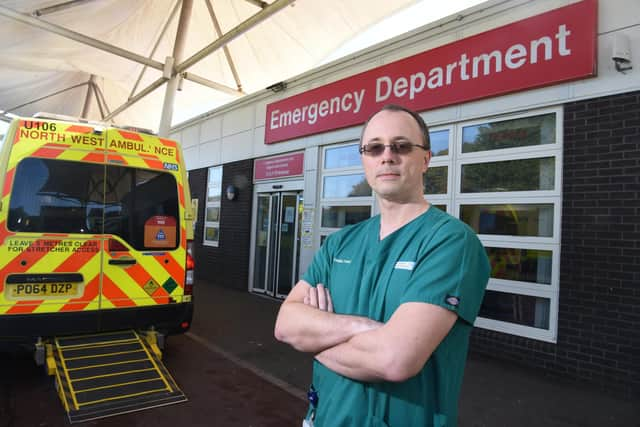

He was speaking as local NHS leaders await a decision on their pitch for the cash to fund brand new hospital facilities for both Preston and Lancaster.
As the Post revealed last month, health service bosses have said that the ambitious aim is their “preferred option” from a shortlist of possibilities drawn up following a government pledge made in 2019 to replace or extensively refurbish 40 hospital sites across the country, a figure later upped to 48.
The alternative would be to partially rebuild both the Royal Preston and Royal Lancaster Infirmary in their current locations or for one of the cities to get an entirely new hospital and the other to have its service substantially rebuilt where it now stands.
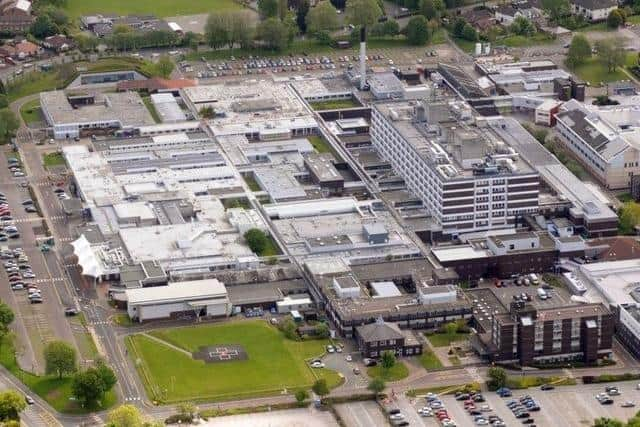

Advertisement
Hide AdAdvertisement
Hide AdWhile Dr. Stewart says that either outcome would be an improvement on the existing situation, he believes only a new-build would address all of the challenges that the Royal Preston now faces.
He says that one of the biggest benefits of starting from scratch would be the ability to provide more single rooms for patients. Currently, fewer than 1 in 5 beds on the site is in a private space - something which Dr. Stewart says not only causes practical problems for staff, but also risks destabilising some of the most vulnerable patients.
“In the emergency department and the hospital as a whole, every time you’ve got a patient with flu, Covid or gastroenteritis, you’re looking to separate them from the rest of the patients so they are not spreading it.
“When you’ve got a limited number of side rooms, you end up spending a lot of time moving patients in and out. If you put someone into a side room [because of their symptoms], do an assessment of them and it then turns out to be something more benign, you have to swap people out, get the room cleaned and get the next patient in - because you might also have a cancer patient on chemotherapy who needs [to be segregated].
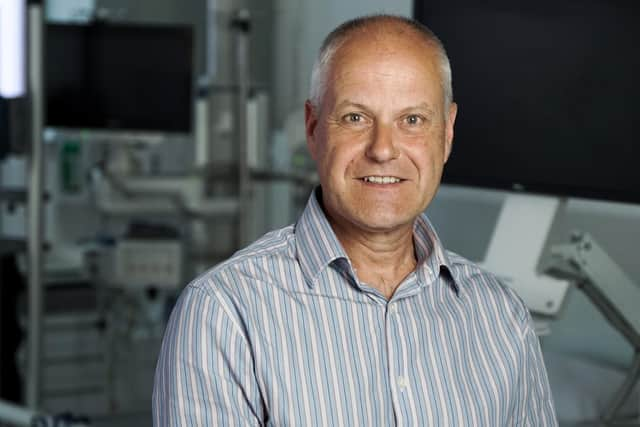

Advertisement
Hide AdAdvertisement
Hide Ad“So it's hard work for the staff, but if you're unwell, then [being moved] is a big risk factor for delirium and becoming very confused - it’s not great for [a person’s] recovery. Every time you move someone, especially if they’re a bit confused to start with, it just makes it that little bit worse.
“One minute they’re at home, then they're in one space [in the hospital] and then a different space. If you’ve got somewhere that has a lot more side rooms, you're not having to move people in and out all the time.
“If you've got someone who is a little bit frailer or has dementia, just bringing them into hospital at all can be quite distressing - and moving them adds to the upset for them. We do our best to look after them, but to avoid that [distress] in the future would be great - that’s part of...looking after the whole of the person and not just treating the disease,” Dr. Stewart explained.
The aim for a new Royal Preston would be for 70 percent of beds to be in single rooms. That ambition is set out in the so-called “case for change”, published last year, which also describes the deficiencies of the existing hospital estate - not least its £157m maintenance backlog.
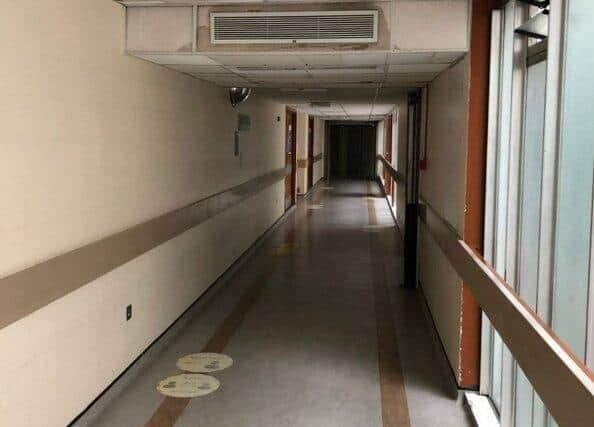

Advertisement
Hide AdAdvertisement
Hide AdThe Royal Preston was built in stages between 1975 and 1983 – with 70 percent of the buildings still in use dating back to that period – and does not comply with modern hospital building standards when it comes to the space available.
Almost all operating theatres and all day case theatres are well below the recommended sizes which are designed to enhance flexibility and enable new technology to be accommodated when it becomes available.
According to the case for change, a typical 28-bed ward at the Royal Preston would need to increase its capacity by 220 percent to comply with what are known as “health building note” standards.
Demand is now exceeding capacity across all clinical areas, causing “congestion and overcrowding”, the document states – with the facility also experiencing “serious dilapidation”.
Advertisement
Hide AdAdvertisement
Hide AdIf he were given a blank sheet of paper on which to design a new hospital, Dr. Stewart - who is also the divisional director of medicine at Lancashire Teaching Hospitals (LTH), the trust that runs the Royal Preston - says he would want to ensure not just sufficient space, but a more practical layout. That would ensure that diagnostic testing equipment, like X-rays and CT scans, was more closely on hand.
Many of the acute services that interconnect with the accident and emergency department are currently not located anywhere near the unit.
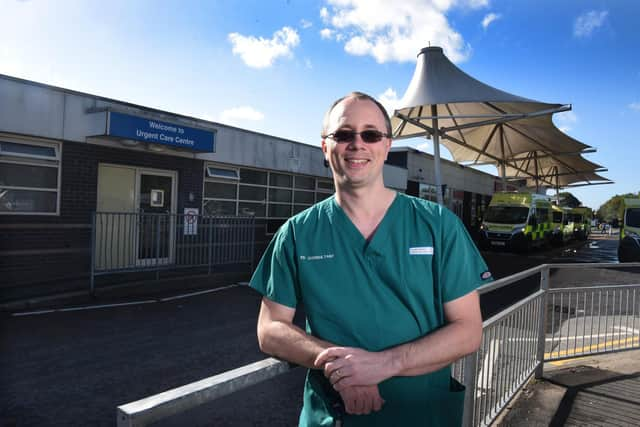

“[A&E] is at the front of the hospital, which is great because it’s accessible - but then all the specialist teams that we want to work with are largely based at the back of the main site.
“When we do need to work together, we are pulling them away from where they are based to come to us to look after the patients and move them from where we are back into the larger part of the hospital - the operating theatres, intensive care and similar.
Advertisement
Hide AdAdvertisement
Hide Ad“It doesn't work as smoothly and as seamlessly as we'd like it to. If you were building today, you'd put all those acute areas together.
“So instead of it being time to wrap up the A&E stage and move [a patient] on somewhere else, it’d be more [a case of] moving them next door…in a more efficient and integrated way.”
The hospital’s neurology ward is in an area that is not physically connected to the main site - resulting in the extraordinary situation where patients need an ambulance to transfer them within the hospital grounds if they have to move from that ward to the main hospital building.
Even under the partial rebuild option, many acute services would be located in closer proximity to each other in what would become a new “urgent and emergency care village”.
Advertisement
Hide AdAdvertisement
Hide AdDr. Stewart says that the reality of the way the Royal Preston is forced to operate is brought home to the staff who deal with its challenges if they or their families ever have cause to visit other hospitals.
Having recently toured the new modular Cuerden ward at Chorley and South Ribble Hospital, he said that it was like stepping back in time when he returned to the Royal Preston.
“They have washing facilities in each bay, you've got a better [view of patients] and it’s designed in a modern way.
“We have managed to adapt each individual area [at the Royal Preston] to what we need, but they're just spread out a little bit more than I’m entirely comfortable with - so you end up with a senior doctor and senior nurse in the different areas to keep that oversight, but then if I’m in overall charge, I don't have quite that line of sight.
Advertisement
Hide AdAdvertisement
Hide Ad“[That means] there is a lot of time spent walking around, checking in with everyone - and that’s time that I could [put] into looking after patients [and] teaching our trainees.
“If you think about it every day, it's almost depressing to think…how much better things could be and how much better it could be for the patients.
“We look after our patients and get the right outcomes - but it's harder than it needs to be,” Dr. Stewart added.
He is also in no doubt about how the Royal Preston manages to function in the way that it does - in spite of being built in an age when there were fewer patients and fewer treatments to help them.
Advertisement
Hide AdAdvertisement
Hide Ad“I think the greatest strength of the NHS is the people who work for it. I work with fantastic people every day and the amount we can do now to look after people [and] to keep people alive is phenomenal.
“But having the right environment would make life just so much easier for everyone – the preferred option is the preferred option for a reason.”
‘TIME IS RUNNING OUT TO OPEN BY 2030’
The man leading the push for new hospitals in both Preston and Lancaster says it is entirely reasonable for the NHS in Lancashire to ask the government to stump up for two totally new facilities.
Pressed by the Post about whether it was realistic to go for the gold standard in both locations, Jerry Hawker, senior responsible officer for the Lancashire and South Cumbria New Hospitals Programme, said that it was important to consider the backdrop against which the ambitious request was being made.
Advertisement
Hide AdAdvertisement
Hide Ad“It’s an area that covers towards two million people - and there have been no new hospitals built in Lancashire for over 30 years. The reason why I think it’s realistic is because of those sort of facts.
“If we had had another hospital built recently, then you might say [otherwise]. But the government commitment is for 40 new hospitals - both [Preston and Lancaster] are listed in there, so we’re still very much of the ambition that we need two new hospitals and the case stacks up,” Mr. Hawker said.
Lancashire and South Cumbria is in a cohort within the national new hospitals programme which is centred around a timetable for building beginning - in whatever form might ultimately be approved - by 2025, with a view to any new facilities being open by 2030.
To that end, Mr. Hawker is hopeful that the region will shortly hear one way or the other whether its bid has been successful.
Advertisement
Hide AdAdvertisement
Hide Ad“The construction industry is incapable of building 40 new hospitals at once, so there has got to be an appropriate balance and you’ve got to get the right construction company, so I’m quite pragmatic [about timing].
“What I am saying, though, is we need a decision soon…as the timescales are now getting very tight for us to be able to complete this work and meet the government’s commitment of having it built by 2030.”
Before that decision is made, representatives of the national programme are set to visit Lancashire to see for themselves why local NHS leaders claim that the county needs such a significant investment in its hospital facilities. Although the estimated cost of two brand new buildings has not been made public, the Post understands that is likely to be far in excess of an indicative £1.1bn funding envelope provided back in 2019.
Jerry Hawker says he is looking forward to the planned visit, which he believes will prove even more persuasive than the written proposal that his team has already submitted.
Advertisement
Hide AdAdvertisement
Hide Ad“I think it’s really important that people do come out and look - you can't write down the reality of what the hospitals are like and what it’s like to walk round them if you’re a patient or carer or a member of staff.
“We can still make a big step forward with [the alternative proposal of] partial rebuilds, it just wouldn't be anywhere near the same. If you look at the Royal Preston, the big difference is…a partial rebuild won't replace the big tower block building.
“But it’s going to have to be replaced in the next 20 years or so, because it’s not fit - and that’s the sort of compromise we have to look at. You've got to look at this [as] being a 40-50 year return on investment.”
If the green light is given to either one or two brand new hospitals, a formal public consultation would have to be carried out first - most likely next year. As part of that process, proposed sites for the new facilities - which the Post understands are close to being finalised - would be put into the public domain.
Advertisement
Hide AdAdvertisement
Hide AdThe NHS has engaged a land agent to cast the net for sites within a ten-mile radius of each of the existing Preston and Lancaster hospitals. Mr. Hawker said that the distance range was a reflection of the difficulty of finding a suitable plot for such a substantial development.
“It’s easy to say you could build it here, here and here - but it's much more complex than that. Radiotherapy centres effectively have nuclear bunkers, so the ground conditions and the utilities have to be right.
“But there’s always going to be the focus, [as] we've seen from the public reaction, [on] a site having good access and good transport [links] - and obviously wherever you put it, there will be people who are winners and people who think that they are losers.
“So we’ve got to find the right balance [and] it’s important that people realise you can't just build a hospital anywhere.”
Advertisement
Hide AdAdvertisement
Hide AdThe overarching plans to date have already been informed by extensive public engagement undertaken over the last 18 months - to which more than 15,000 people have contributed, with their preference being for the same new-build option that NHS bosses have now put on the table.
A survey remains open until midnight on Monday (31st October) for residents to have their say on the blueprint for the future of hospital services in the region.
“It’s fantastic to see the overwhelming support there is for two new hospitals - it’s not surprising, but it’s really encouraging and reinforcing to see that the public recognise that we really are at a point where those hospitals need to be replaced.
“It’s only with us now stating what our preferred option is that I think it starts to feel real with the public. They can almost touch it and feel it, rather than it being something hypothetical,” Mr. Hawker said.
PARKING PROBLEMS
Advertisement
Hide AdAdvertisement
Hide AdThe case for change describes parking availability at both hospitals as "desperately insufficient".
"Car parking is consistently highlighted as a concern in our feedback from staff and patients. There are approximately 2,000 car parking spaces at Royal Preston Hospital. This is not sufficient for our workforce, so around 1,000 staff members are required to park off-site and use park and ride services.
"At Royal Lancaster Infirmary, there are 460 spaces for the 2,809 staff based there, with limited park and ride facilities," the document notes.
Royal Preston A&E consultant Michael Stewart recognises that the inadequate number of spaces also poses a real problem for patients.
Advertisement
Hide AdAdvertisement
Hide Ad"One of the worst things for a patient is if they know they’ve got an appointment for [say] 10am, they arrive at 9.30, thinking there is plenty of time and then 25 minutes later they are still circling the car park - it just adds to the stress for them."
Royal Lancaster nurse Cherish Otoo says that her hospital's location means that there are no other options for parking in the vicinity - for staff or patients - once the car park is full.
